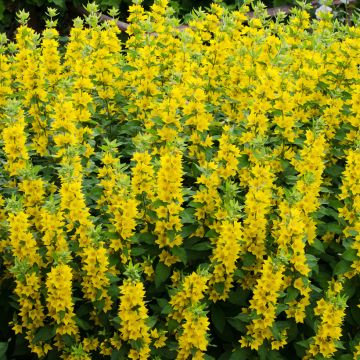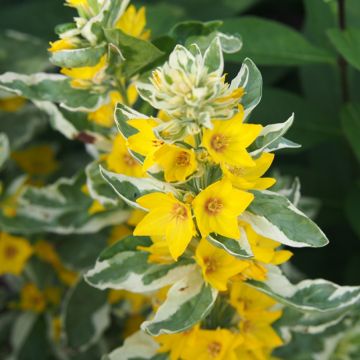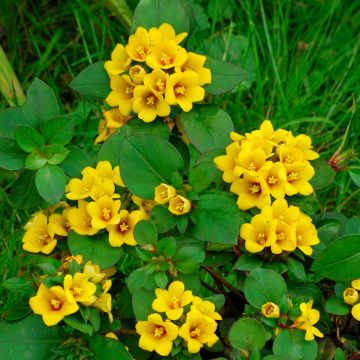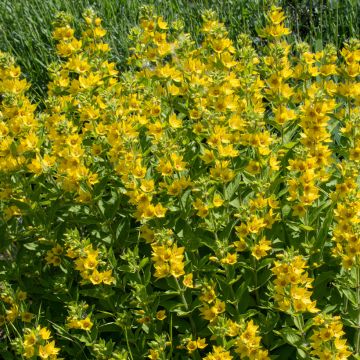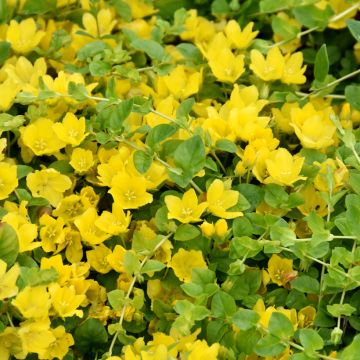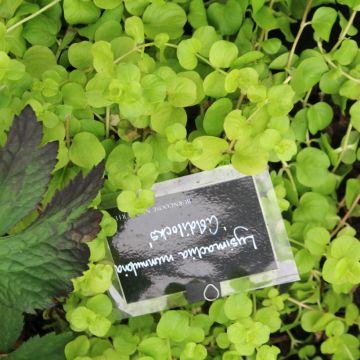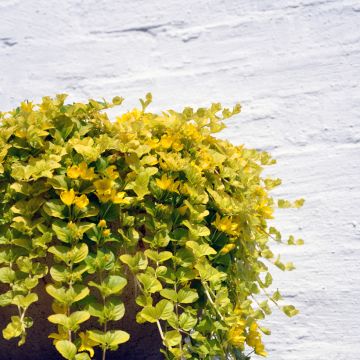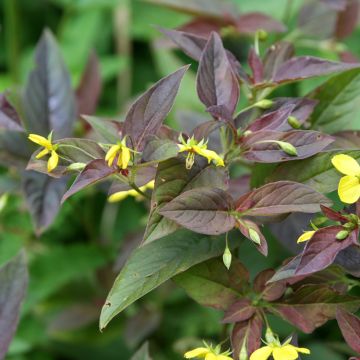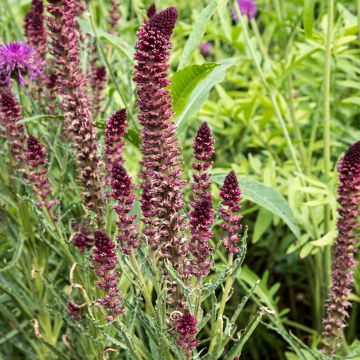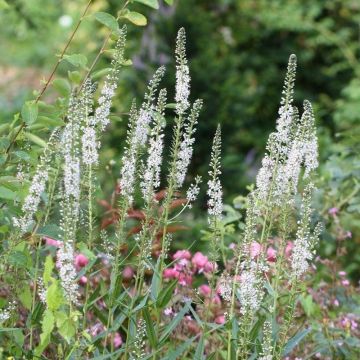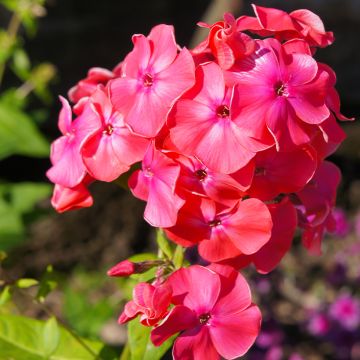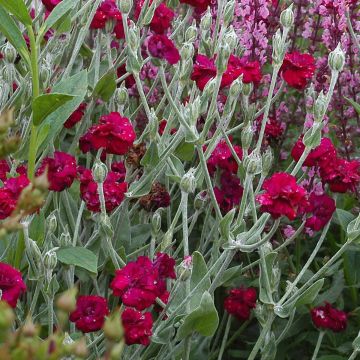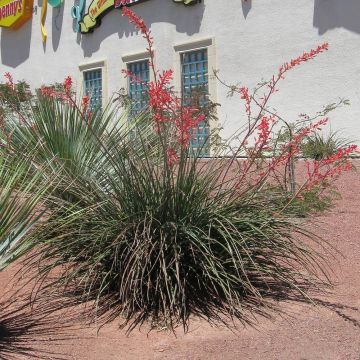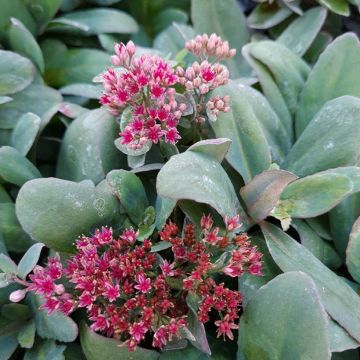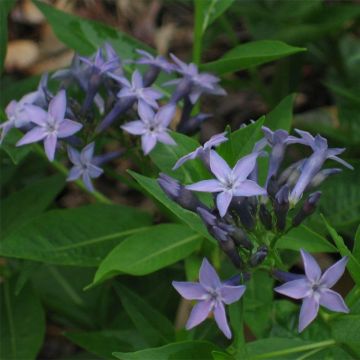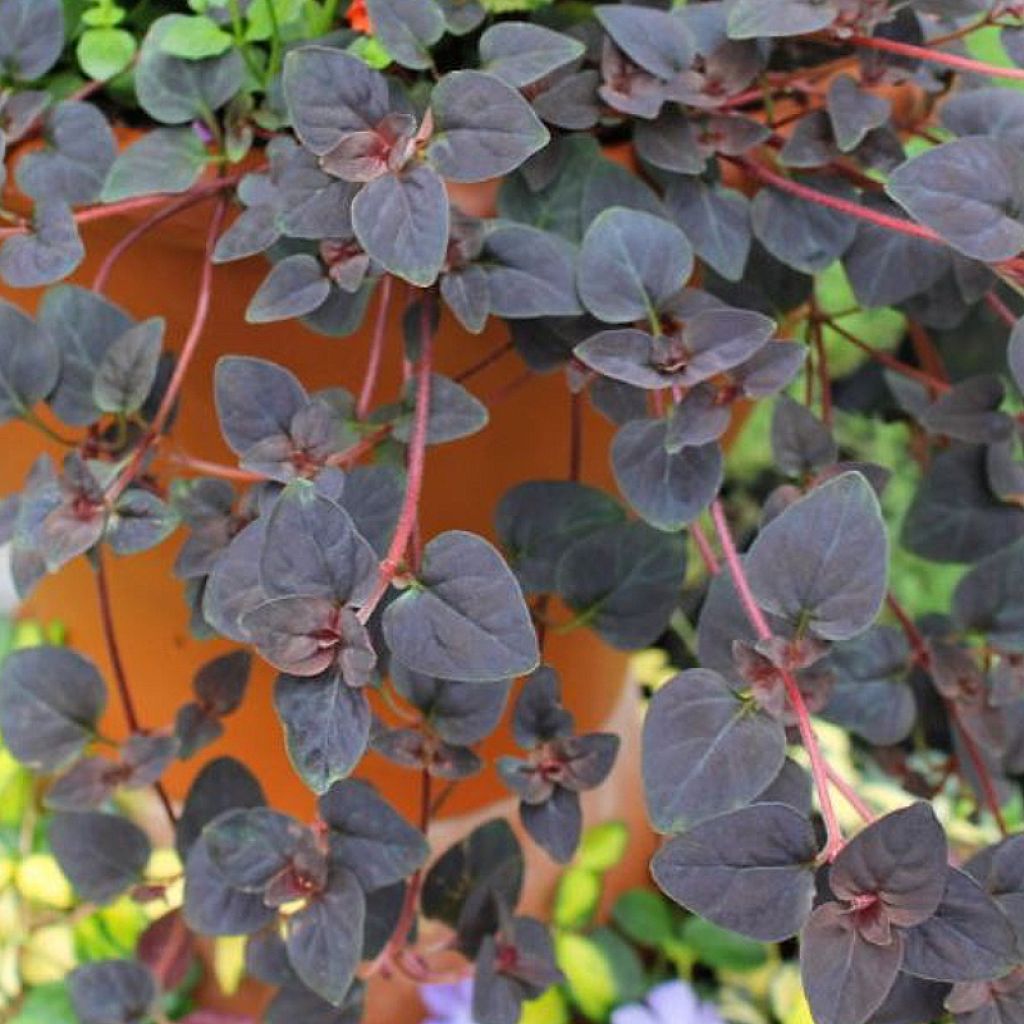

Lysimachia congestiflora Persian Chocolate - Lysimache
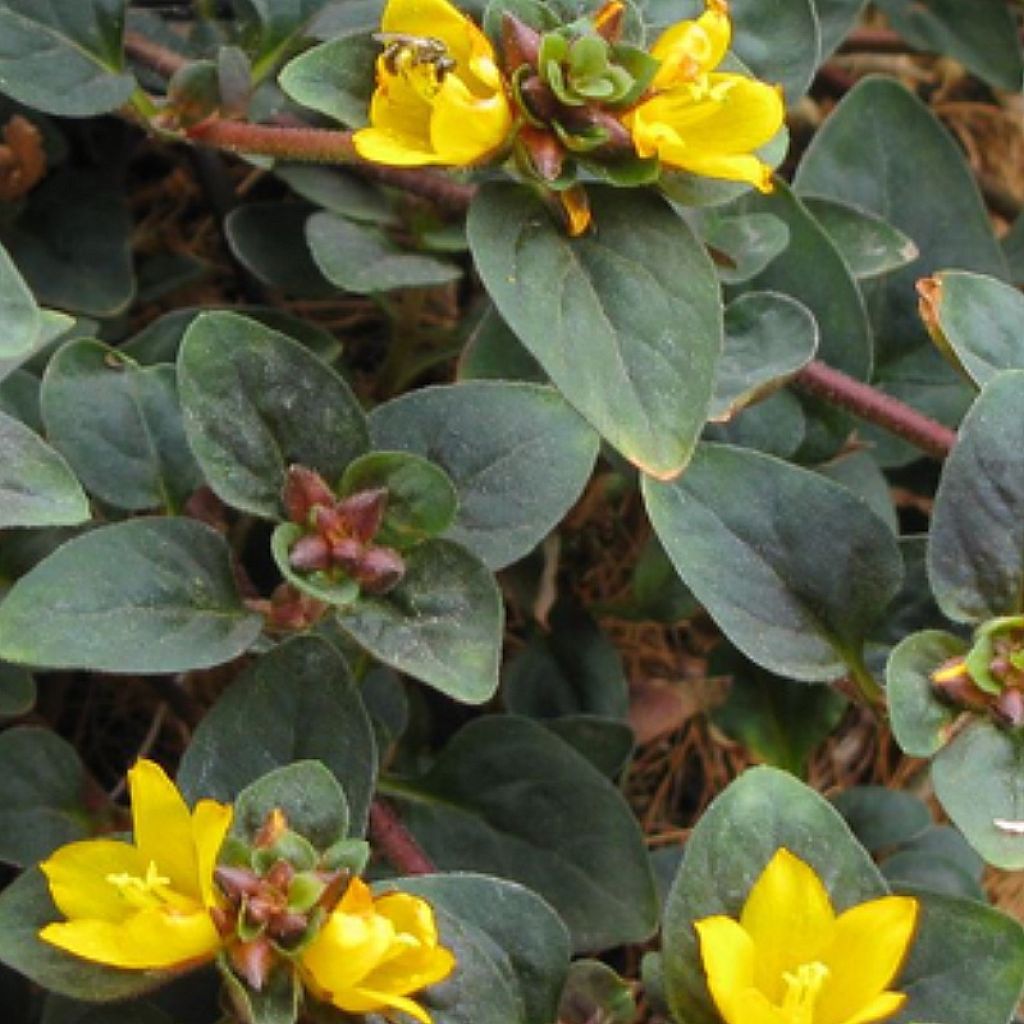

Lysimachia congestiflora Persian Chocolate - Lysimache
Lysimachia congestiflora Persian Chocolate - Loosestrife
Lysimachia congestiflora Persian Chocolate
Golden globes Loosestrife
Why not try an alternative variety in stock?
View all →This plant carries a 12 months recovery warranty
More information
We guarantee the quality of our plants for a full growing cycle, and will replace at our expense any plant that fails to recover under normal climatic and planting conditions.
From €5.90 for pickup delivery and €6.90 for home delivery
Express home delivery from €8.90.
Does this plant fit my garden?
Set up your Plantfit profile →
Description
Lysimachia congestiflora 'Persian Chocolate' is a particularly colourful variety of creeping loosestrife, displaying a magnificent contrast between its spring foliage in shades of brownish-purple and its yellow flowers. This small perennial plant forms a thick, evergreen carpet in moist, even clayey soils, in any exposure. Not very hardy, it is often used in containers and hanging baskets, where it forms beautiful dark draperies adorned with yellow flowers. In mild climates, it can form beautiful low-maintenance and attractive ground cover all year round.
Lysimachia congestiflora 'Persian Chocolate' belongs to the Primulaceae family, just like primroses. It is a horticultural creation made by New Zealand breeder Darrell Probst. Its ancestor, compact loosestrife, is a short-lived Chinese species with a weakly suckering stump, from which prostrate leafy stems emerge, forming a dense carpet, 10 to 15cm (4 to 6in) in height and 40 to 50cm (16 to 20in) in diameter, or even more over time. The stems bear glabrous lance-shaped foliage that changes from purplish-green to violet-brown. The 5cm (2in) long leaves are tender and slightly glossy. The particularly long and abundant flowering begins in May and continues until September. An abundance of globose and dense clusters rise among the foliage, with a good portion of them being submerged by the flowers. Each cluster consists of small cup-shaped flowers, 2cm (1in) in diameter, with 5 fused petals. They are bright yellow with an almost red base. Lysimachia congestiflora 'Persian Chocolate' can withstand short frosts of about -7°C (19.4°F). Its foliage persists all year round in mild climates.
Lysimachia congestiflora 'Persian Chocolate' will find its place in any moist areas of the garden, where the soil never dries out, even in clayey soil. It likes full sun or partial shade. Pair it with other plants that appreciate moistness, such as thrifts, dwarf bellflowers, coral bells, foamflowers, hostas, and small ferns in partial shade. If you grow it in a pot, water it every 2 days. You can also pair it with blue or white Lobelia erinus and compact Inca lilies (from the 'Inticancha' series, for example).
Report an error about the product description
Lysimachia congestiflora Persian Chocolate - Loosestrife in pictures
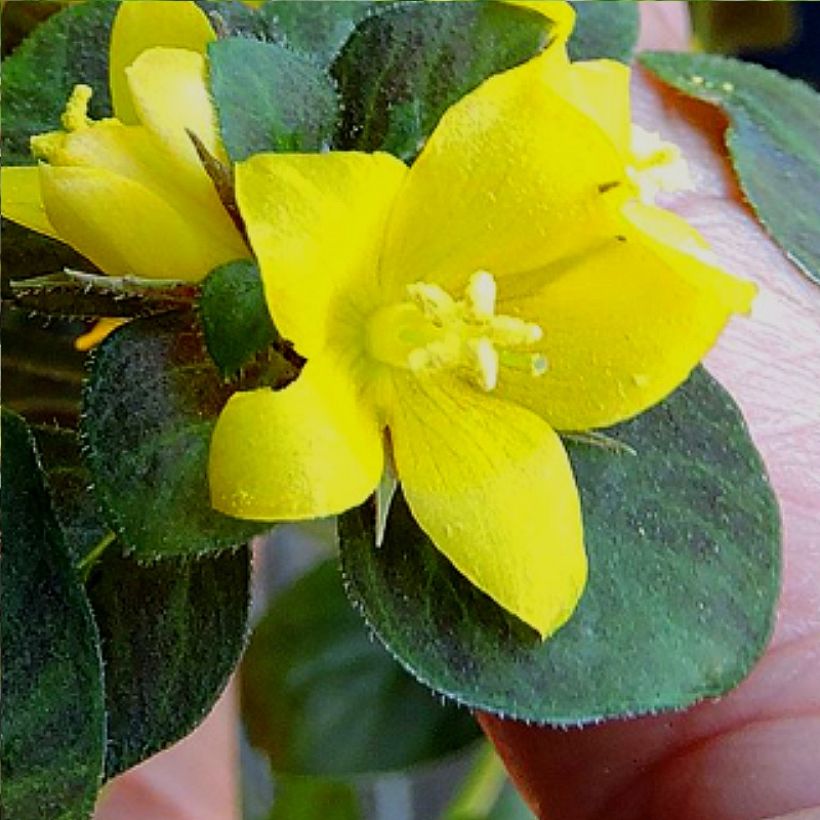

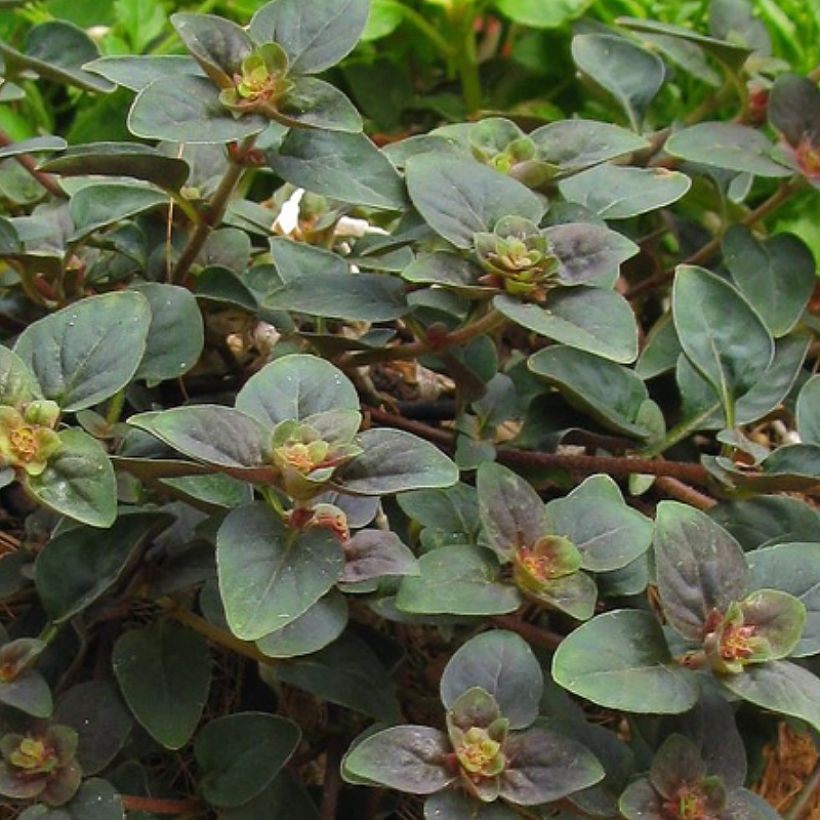

Flowering
Foliage
Plant habit
Botanical data
Lysimachia
congestiflora
Persian Chocolate
Primulaceae- Myrsinaceae
Golden globes Loosestrife
Cultivar or hybrid
Other Lysimachia
Planting and care
Lysimachia congestiflora 'Persian Chocolate' is easy to grow in any soil close to neutrality that remains consistently moist, or even wet. It prefers rich, humus-rich or clayey soils without too much limestone. It does not tolerate any drought. It can be planted in the ground in mild climates, with a good mulch of dead leaves to protect it from the cold in winter. Its hardiness is around -7°C (19.4°F). The clumps can be divided when they become less floriferous, which is every three or four years. This plant thrives in both full sun (in soil that remains moist to wet) and partial shade. It tolerates shade, but will be slightly less floriferous. Growing it in a pot requires regular watering and fertilising with plant food for flowering plants.
Planting period
Intended location
Care
This item has not been reviewed yet - be the first to leave a review about it.
Summer flowering perennials
Haven't found what you were looking for?
Hardiness is the lowest winter temperature a plant can endure without suffering serious damage or even dying. However, hardiness is affected by location (a sheltered area, such as a patio), protection (winter cover) and soil type (hardiness is improved by well-drained soil).

Photo Sharing Terms & Conditions
In order to encourage gardeners to interact and share their experiences, Promesse de fleurs offers various media enabling content to be uploaded onto its Site - in particular via the ‘Photo sharing’ module.
The User agrees to refrain from:
- Posting any content that is illegal, prejudicial, insulting, racist, inciteful to hatred, revisionist, contrary to public decency, that infringes on privacy or on the privacy rights of third parties, in particular the publicity rights of persons and goods, intellectual property rights, or the right to privacy.
- Submitting content on behalf of a third party;
- Impersonate the identity of a third party and/or publish any personal information about a third party;
In general, the User undertakes to refrain from any unethical behaviour.
All Content (in particular text, comments, files, images, photos, videos, creative works, etc.), which may be subject to property or intellectual property rights, image or other private rights, shall remain the property of the User, subject to the limited rights granted by the terms of the licence granted by Promesse de fleurs as stated below. Users are at liberty to publish or not to publish such Content on the Site, notably via the ‘Photo Sharing’ facility, and accept that this Content shall be made public and freely accessible, notably on the Internet.
Users further acknowledge, undertake to have ,and guarantee that they hold all necessary rights and permissions to publish such material on the Site, in particular with regard to the legislation in force pertaining to any privacy, property, intellectual property, image, or contractual rights, or rights of any other nature. By publishing such Content on the Site, Users acknowledge accepting full liability as publishers of the Content within the meaning of the law, and grant Promesse de fleurs, free of charge, an inclusive, worldwide licence for the said Content for the entire duration of its publication, including all reproduction, representation, up/downloading, displaying, performing, transmission, and storage rights.
Users also grant permission for their name to be linked to the Content and accept that this link may not always be made available.
By engaging in posting material, Users consent to their Content becoming automatically accessible on the Internet, in particular on other sites and/or blogs and/or web pages of the Promesse de fleurs site, including in particular social pages and the Promesse de fleurs catalogue.
Users may secure the removal of entrusted content free of charge by issuing a simple request via our contact form.
The flowering period indicated on our website applies to countries and regions located in USDA zone 8 (France, the United Kingdom, Ireland, the Netherlands, etc.)
It will vary according to where you live:
- In zones 9 to 10 (Italy, Spain, Greece, etc.), flowering will occur about 2 to 4 weeks earlier.
- In zones 6 to 7 (Germany, Poland, Slovenia, and lower mountainous regions), flowering will be delayed by 2 to 3 weeks.
- In zone 5 (Central Europe, Scandinavia), blooming will be delayed by 3 to 5 weeks.
In temperate climates, pruning of spring-flowering shrubs (forsythia, spireas, etc.) should be done just after flowering.
Pruning of summer-flowering shrubs (Indian Lilac, Perovskia, etc.) can be done in winter or spring.
In cold regions as well as with frost-sensitive plants, avoid pruning too early when severe frosts may still occur.
The planting period indicated on our website applies to countries and regions located in USDA zone 8 (France, United Kingdom, Ireland, Netherlands).
It will vary according to where you live:
- In Mediterranean zones (Marseille, Madrid, Milan, etc.), autumn and winter are the best planting periods.
- In continental zones (Strasbourg, Munich, Vienna, etc.), delay planting by 2 to 3 weeks in spring and bring it forward by 2 to 4 weeks in autumn.
- In mountainous regions (the Alps, Pyrenees, Carpathians, etc.), it is best to plant in late spring (May-June) or late summer (August-September).
The harvesting period indicated on our website applies to countries and regions in USDA zone 8 (France, England, Ireland, the Netherlands).
In colder areas (Scandinavia, Poland, Austria...) fruit and vegetable harvests are likely to be delayed by 3-4 weeks.
In warmer areas (Italy, Spain, Greece, etc.), harvesting will probably take place earlier, depending on weather conditions.
The sowing periods indicated on our website apply to countries and regions within USDA Zone 8 (France, UK, Ireland, Netherlands).
In colder areas (Scandinavia, Poland, Austria...), delay any outdoor sowing by 3-4 weeks, or sow under glass.
In warmer climes (Italy, Spain, Greece, etc.), bring outdoor sowing forward by a few weeks.

































